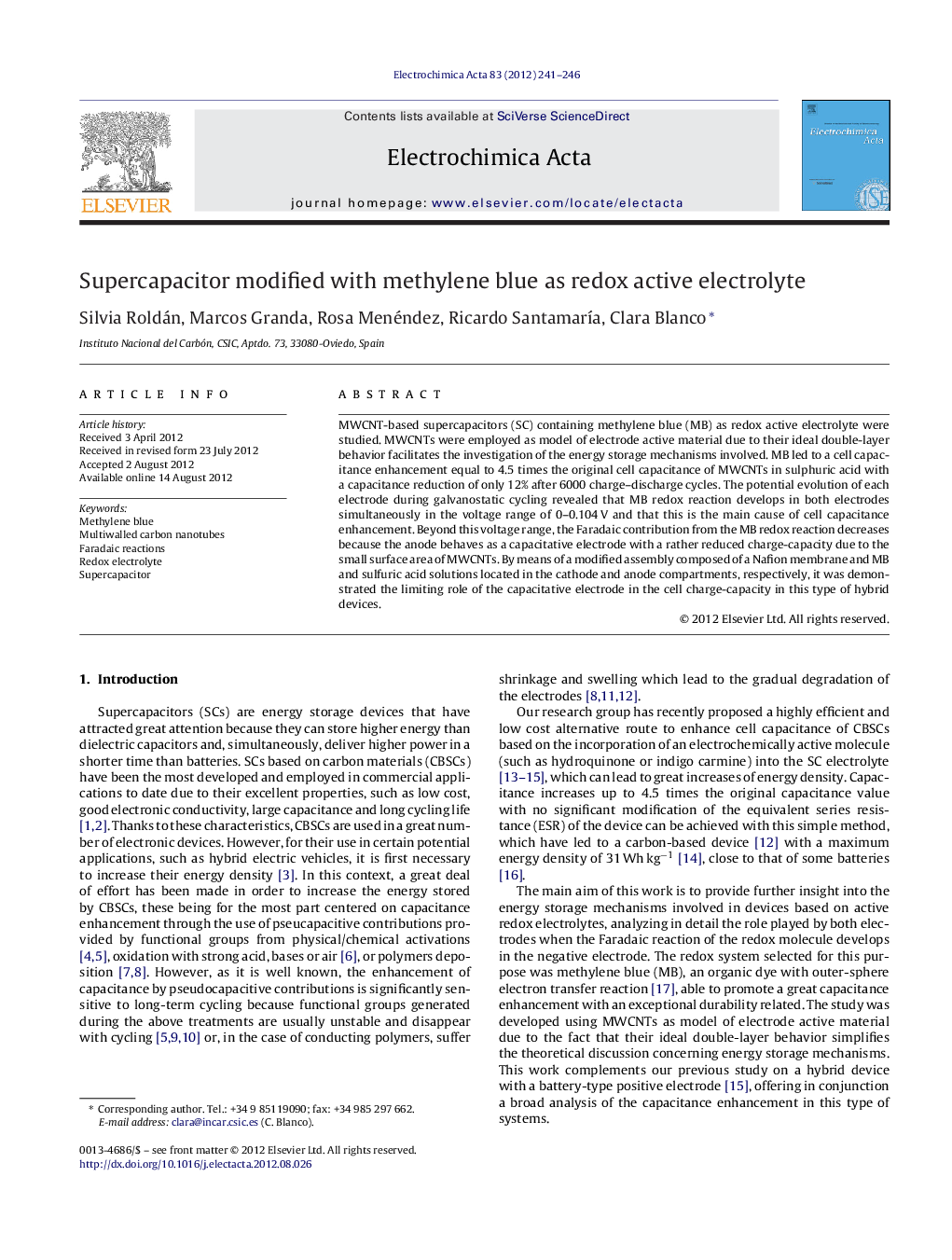| Article ID | Journal | Published Year | Pages | File Type |
|---|---|---|---|---|
| 188085 | Electrochimica Acta | 2012 | 6 Pages |
MWCNT-based supercapacitors (SC) containing methylene blue (MB) as redox active electrolyte were studied. MWCNTs were employed as model of electrode active material due to their ideal double-layer behavior facilitates the investigation of the energy storage mechanisms involved. MB led to a cell capacitance enhancement equal to 4.5 times the original cell capacitance of MWCNTs in sulphuric acid with a capacitance reduction of only 12% after 6000 charge–discharge cycles. The potential evolution of each electrode during galvanostatic cycling revealed that MB redox reaction develops in both electrodes simultaneously in the voltage range of 0–0.104 V and that this is the main cause of cell capacitance enhancement. Beyond this voltage range, the Faradaic contribution from the MB redox reaction decreases because the anode behaves as a capacitative electrode with a rather reduced charge-capacity due to the small surface area of MWCNTs. By means of a modified assembly composed of a Nafion membrane and MB and sulfuric acid solutions located in the cathode and anode compartments, respectively, it was demonstrated the limiting role of the capacitative electrode in the cell charge-capacity in this type of hybrid devices.
